CD56 Expression Marks Human Group 2 Innate Lymphoid Cell Divergence from a Shared NK Cell and Group 3 Innate Lymphoid Cell Developmental Pathway
- PMID: 30193847
- PMCID: PMC6148384
- DOI: 10.1016/j.immuni.2018.08.010
CD56 Expression Marks Human Group 2 Innate Lymphoid Cell Divergence from a Shared NK Cell and Group 3 Innate Lymphoid Cell Developmental Pathway
Abstract
According to the established model of murine innate lymphoid cell (ILC) development, helper ILCs develop separately from natural killer (NK) cells. However, it is unclear how helper ILCs and NK cells develop in humans. Here we elucidated key steps of NK cell, ILC2, and ILC3 development within human tonsils using ex vivo molecular and functional profiling and lineage differentiation assays. We demonstrated that while tonsillar NK cells, ILC2s, and ILC3s originated from a common CD34-CD117+ ILC precursor pool, final steps of ILC2 development deviated independently and became mutually exclusive from those of NK cells and ILC3s, whose developmental pathways overlapped. Moreover, we identified a CD34-CD117+ ILC precursor population that expressed CD56 and gave rise to NK cells and ILC3s but not to ILC2s. These data support a model of human ILC development distinct from the mouse, whereby human NK cells and ILC3s share a common developmental pathway separate from ILC2s.
Keywords: Human innate lymphoid cells; ILC development; natural killer cells.
Copyright © 2018 Elsevier Inc. All rights reserved.
Conflict of interest statement
COMPETING FINANCIAL INTERESTS
The authors declare no competing financial interests.
Figures
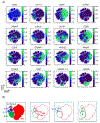
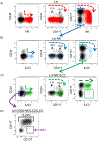

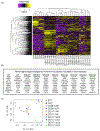

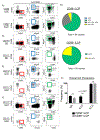
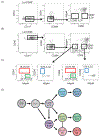
Similar articles
-
The transcription Factor AHR prevents the differentiation of a stage 3 innate lymphoid cell subset to natural killer cells.Cell Rep. 2014 Jul 10;8(1):150-62. doi: 10.1016/j.celrep.2014.05.042. Epub 2014 Jun 19. Cell Rep. 2014. PMID: 24953655 Free PMC article.
-
KLRG1 and NKp46 discriminate subpopulations of human CD117+CRTH2- ILCs biased toward ILC2 or ILC3.J Exp Med. 2019 Aug 5;216(8):1762-1776. doi: 10.1084/jem.20190490. Epub 2019 Jun 14. J Exp Med. 2019. PMID: 31201208 Free PMC article.
-
Human RORγt(+)CD34(+) cells are lineage-specified progenitors of group 3 RORγt(+) innate lymphoid cells.Immunity. 2014 Dec 18;41(6):988-1000. doi: 10.1016/j.immuni.2014.11.010. Epub 2014 Nov 28. Immunity. 2014. PMID: 25500367
-
Heterogeneity of NK Cells and Other Innate Lymphoid Cells in Human and Murine Decidua.Front Immunol. 2019 Feb 8;10:170. doi: 10.3389/fimmu.2019.00170. eCollection 2019. Front Immunol. 2019. PMID: 30800126 Free PMC article. Review.
-
Group 3 innate lymphoid cells (ILC3s): Origin, differentiation, and plasticity in humans and mice.Eur J Immunol. 2015 Aug;45(8):2171-82. doi: 10.1002/eji.201545598. Epub 2015 Jun 18. Eur J Immunol. 2015. PMID: 26031799 Review.
Cited by
-
High-dimensional mass cytometry analysis of NK cell alterations in AML identifies a subgroup with adverse clinical outcome.Proc Natl Acad Sci U S A. 2021 Jun 1;118(22):e2020459118. doi: 10.1073/pnas.2020459118. Proc Natl Acad Sci U S A. 2021. PMID: 34050021 Free PMC article.
-
Human NK cells, their receptors and function.Eur J Immunol. 2021 Jul;51(7):1566-1579. doi: 10.1002/eji.202049028. Epub 2021 May 10. Eur J Immunol. 2021. PMID: 33899224 Free PMC article. Review.
-
Cellular pathways in the development of human and murine innate lymphoid cells.Curr Opin Immunol. 2019 Feb;56:100-106. doi: 10.1016/j.coi.2018.11.003. Epub 2018 Dec 19. Curr Opin Immunol. 2019. PMID: 30579240 Free PMC article. Review.
-
Twenty-One Flavors of Type 1 Innate Lymphoid Cells with PD-1 (Programmed Cell Death-1 Receptor) Sprinkles.Discov Immunol. 2023 Feb 7;2(1):kyad003. doi: 10.1093/discim/kyad003. eCollection 2023. Discov Immunol. 2023. PMID: 38567059 Free PMC article. Review.
-
Function of Innate Lymphoid Cells in Periodontal Tissue Homeostasis: A Narrative Review.Int J Mol Sci. 2023 Mar 23;24(7):6099. doi: 10.3390/ijms24076099. Int J Mol Sci. 2023. PMID: 37047071 Free PMC article. Review.
References
-
- Artis D, and Spits H (2015). The biology of innate lymphoid cells. Nature 517, 293–301. - PubMed
-
- Bernink JH, Krabbendam L, Germar K, de Jong E, Gronke K, Kofoed-Nielsen M, Munneke JM, Hazenberg MD, Villaudy J, Buskens CJ, et al. (2015). Interleukin-12 and -23 Control Plasticity of CD127(+) Group 1 and Group 3 Innate Lymphoid Cells in the Intestinal Lamina Propria. Immunity 43, 146–160. - PubMed
Publication types
MeSH terms
Substances
Grants and funding
LinkOut - more resources
Full Text Sources
Other Literature Sources
Research Materials
Miscellaneous

